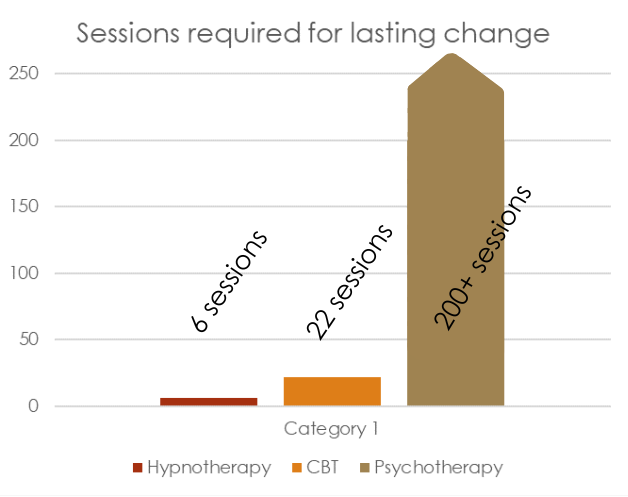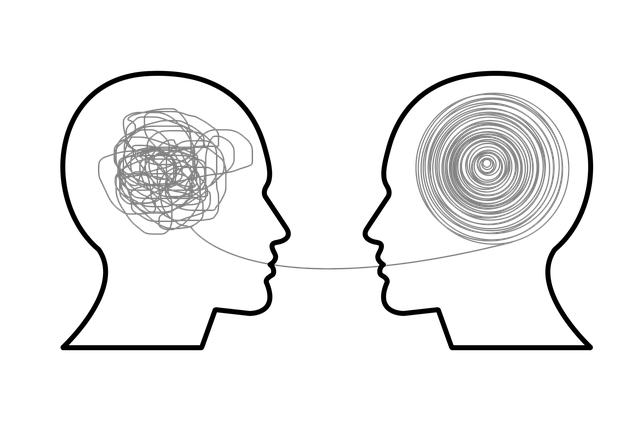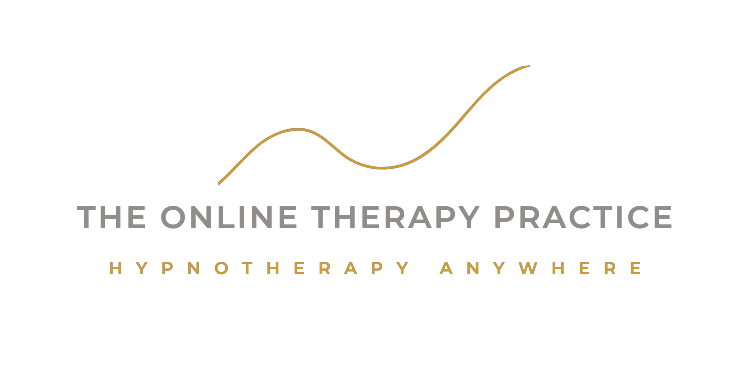How Hypnotherapy Works:
and why it’s such an effective modality
Hypnotherapy is a very powerful therapy modality and can create a lasting change in overall wellbeing and behaviour in an average of 6 sessions. This compared to cognitive behavioural therapy (CBT) that on average requires 22 sessions and psychotherapy which on average needs 600 sessions to create lasting change. (As reported in Psychotherapy: theory research and practice). In this article I will explain how hypnotherapy works and why it is such an effective form of therapy compared to CBT and Psychotherapy.

To understand hypnotherapy, we first need to understand a few things about our mind and our consciousness. Our mind is commonly thought to encompass our ability to think, reason and feel. It encompasses all activity in our conscious as well as our unconscious and/or subconscious mind. Our unconscious and subconscious mind are in general much the same and the difference is not important for the scope of this article. Henceforth I will refer to both as the “subconscious”. Our conscious mind is governed by our prefrontal cortex. It functions logically and analytically and is also where our creativity derives from. Our understanding of the concept and our perception of time occurs in our conscious mind and hence our ability to plan or reflect historically also lies here. The conscious mind learns through active study such as reading, listening, speaking, self-reflection etc.
In comparison the subconscious is governed by the rest of our brain. It can probably be defined more closely but the important distinction is that it is not governed by the prefrontal cortex. In “the rest of the brain” we have systems that govern emotions, speech, movement, survival etc. All automated systems basically. This part of the brain also contains our memory. Our subconscious function through programming, sometimes in hypnotherapy contexts also referred to as imprints. In laymen terms it’s often called “beliefs”. In our subconscious, time doesn’t exist there is only the here and now. After the age of 7 our subconscious mind learns through habits and trauma, ….and through hypnosis. Prior to the age of 7 our subconscious mind is still being programmed and learn through what we experience.
How the subconscious programming is created
We spend our first seven years in life learning how the world works and the process of programming our subconscious mind is constantly ongoing. These years are often referred to as our formative years. Beyond learning to walk and talk and everything else practical we also form believes about the world, others, and ourselves. These believes will later govern what we expect from others, how we feel about ourselves and how we show up in the world. Some examples of these believes are; “I am safe and loved and can trust others to take care of me”, “it’s not safe to express my emotions”, or “only when I cry will someone pay attention to me”. These believes are what we in hypnotherapy referred to as our subconscious programming. The majority of the programming is formed during these formative years, but our subconscious can still learn after that as well as be reprogrammed. As mentioned before our subconscious also learn through habits or rather repetitive experiences. Unfortunately for us it also learns very well through traumatic experiences. Traumatic experiences or “trauma” is any highly emotional event that overwhelm our nervous system. This is usually a very frightening event, and we might even fear for our lives. Traumatic events don’t have to involve just fear, it can even be anger or sadness. Even events that we experience as highly shameful can be “traumatic” in the sense that they overwhelm our nervous system. A sign that our nervous system has been overwhelmed is any time, while highly emotional, we lose a sense of time and space, we get tunnel vision and thinking and reasoning becomes very difficult. Physically you will have a high pulse and shallow breathing at such an event. This is also called a fight or flight response. In hypnotherapy, we often land in such an event as our “root cause”, something I talk more about in my article “what to expect during your hypnotherapy session”.

The everyday role of the conscious and the subconscious mind.
As humans we are mainly guided by our subconscious programming. We simply can’t consciously guide all our behaviour as we would get nothing done, it would take too much cognitive bandwidth. Same goes for our feelings, attitudes, choices, reactions, opinions etc. This is all automatic and guided by the subconscious programming. To illustrate this further, imagine if everything you were to do, say, think or feel took as much effort as solving a riddle or a math problem everything would require a lot more energy to process and time to execute. …considering that, it’s not difficult to understand that our subconscious mind is responsible for guiding pretty much all our behaviour. Hence, to truly change a behaviour and/or a belief we need to change the subconscious programming.
Therapy in a conscious versus a hypnotized state of mind
In both CBT and Psychotherapy or any talk therapy for that matter the therapy and the healing mainly take place in a conscious state. Even guided visualizations and other relaxation techniques where you remain in a state of full awareness takes place in the conscious mind. Hence it doesn’t affect the subconscious programming. Only through repetition will it affect the subconscious. This because as I mentioned before, the subconscious learns through habit. Hence only once a behaviour becomes a habit will it become a subconscious programming. This is why, from a hypnotherapists point of view, CBT and Psychotherapy require a lot more sessions to create lasting change.
Through hypnosis we reach the subconscious mind by effectively bypassing the conscious mind. This is done through relaxation which will put you in a state similar to dreaming. Your brain will go into either beta or theta brain waves depending on how deeply hypnotised you are. From that state of relaxation you have access to your subconscious and can effectively change and rewrite the programming. Now this all sounds easy however the challenge doesn’t lie in accessing the subconscious. It lies in knowing what to change and how to change it. Considering what I have told you about how much of your behaviour is controlled by subconscious programming I am sure you also understand how important it is to work with a hypnotherapist who is extremely well trained and highly ethical and trustworthy.

Changing the programming
To oversimplify things the rewriting can be done in two ways. You can either rewrite the outcome of a programming or you can remove a program and replace it with a new better one.
The first example is not one I work with but is the one that is generally offered in clinical hypnotherapy. In short, the hypnotherapist will feed the subconscious mind with a script that says when A happens and you want to do B you are going to do C instead. This is the simplest way to reprogram and will not take that long. However, it’s not as effective as the second option and you’re not really treating a problem you are treating a symptom. This method is quite often used for changing habits like quitting smoking. You will quit smoking, but you are not dealing with why you smoke and you are likely to pick up some other habit that serves the same purpose as smoking did.
Healing the programming
I would not simply remove a programming as it’s never as effective nor do I believe it’s particularly healing. To remove a bad programming or as I prefer, to resolve a bad programming in an ethical and healing way we have understand the root cause and heal that. This is partly done by releasing the emotions trapped in the root cause. The client will through the session gain understanding and then choose to change. It is all done by the client themselves only guided and supported by me as a therapist. From there the client choose to rewrite the root cause in the way that they prefer to do it. This is a very effective form of hypnotherapy and helps you create the healing and the change that you wish to achieve.
Written by Lisa Davidsson, Psychologist and Hypnotherapist
